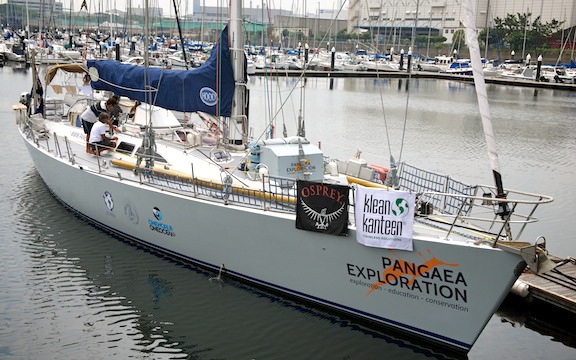Setting sail for the tsunami debris field
The voyage hasn’t even started and already it’s been an adventure. After discovering a typhoon making it’s way up the Japanese coastline we decided to stay in the Yokohama Marina south of Tokyo to let the storm pass.
I’m so glad we did because two rowers were stranded while making their way across the Pacific and have just been rescued by the Japanese Coast Guard.
We depart today and will spend three weeks on a 72-foot sailboat traveling from Japan to Maui to track the one million tons of tsunami debris headed toward the west coast of Canada and the U.S.
I’ll be writing about what we find for The New York Times, Civil Beat and possibly even the Boston Globe, whose science editor is interested in a story.
The expedition is organized by 5Gyres, Algalita and Pangaea Exploration and the 13-passenger crew is comprised of scientists, ocean conservationists and documentarians.
A major goal of the voyage is to see what’s out there, how much we encounter and whether any of it is hazardous. Most scientists I’ve spoken with, including scientists from Woods Hole Oceanographic Institution and NOAA say it’s unlikely that the debris is radioactive since plastic—which will comprise most of the debris field—doesn’t absorb radioactive compounds. Also, most of the debris had dispersed before the nuclear reactors at Fukushima started leaking.
Already, beachcombers in Alaska and California have found debris strewn on local shores. Recent news reports have identified everything from a floating ghost ship to a soccer ball that have made their way across the Pacific—the soccer ball was even returned to it’s owner.
NOAA is accepting emails from anyone who finds heirlooms that could be traced back to survivors of the tsunami.
We’ll be sampling the debris using a manta trawl, free-diving off the debris and we’ll be taking water samples for scientists back at Woods Hole who will analyze the liquid for radioactive isotopes like cesium, something you may have read about recently when news outlets across the U.S. reported that bluefin tuna caught off the coast of California contain low levels of cesium.
I’ll be at sea for three weeks with limited internet access but you can follow the voyage here on my blog or on Twitter @thegarbagegirl.

What an interesting experience this will be. Be safe!